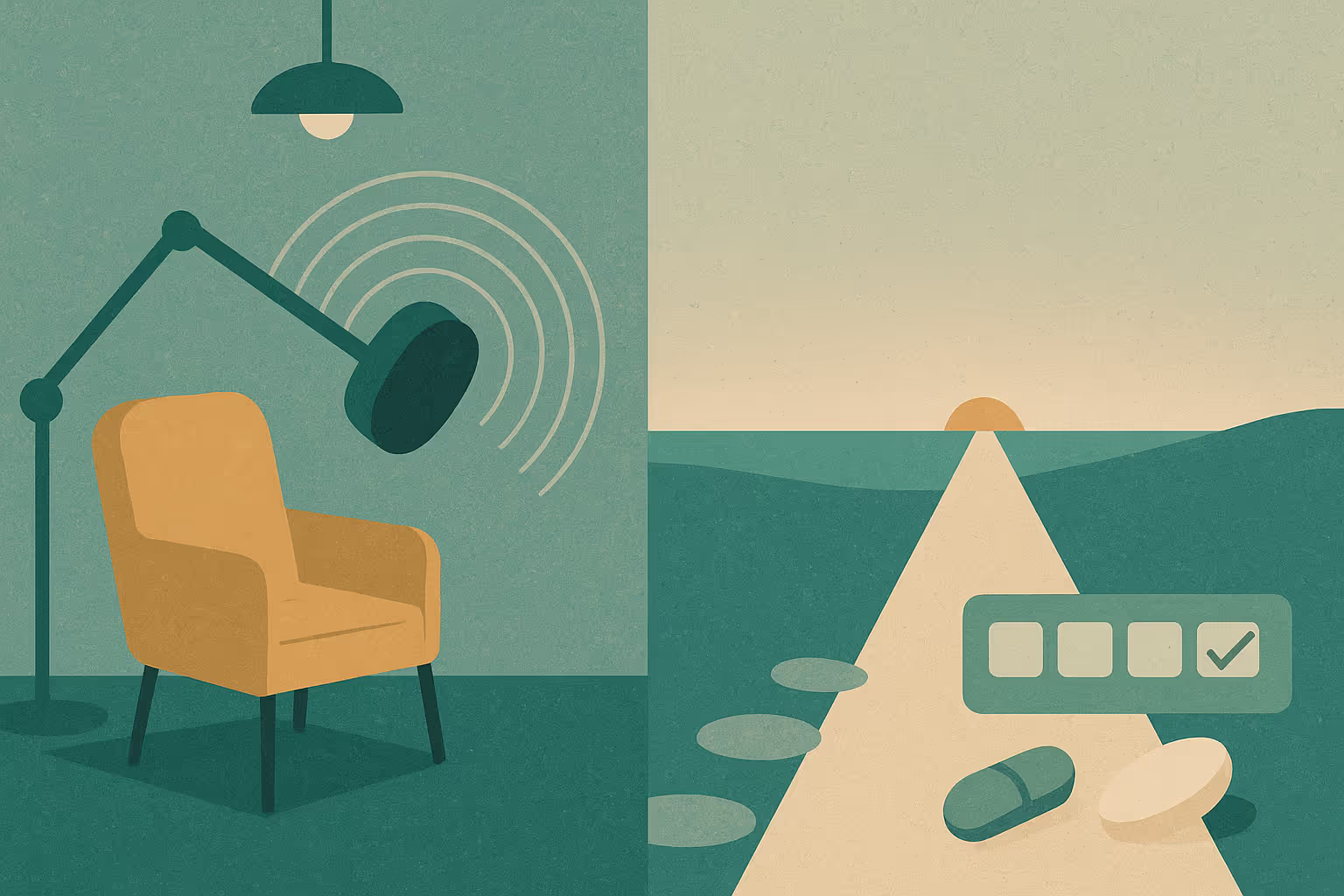Safety is not a line item at Lumin Health — it’s the pulse running through every step of ketamine therapy and Spravato treatment. For many clinicians, especially those referring patients for the first time, the unknowns can feel daunting:
- What happens if my patients’ blood pressure spikes?
- Who gets called if a patient feels unwell?
- As the referring provider, how do I stay informed without being in the room?
- How do I establish a partnership?
This is where transparency matters most. Our goal is simple: you should always know who calls whom, when, and how.
Below, please consider the Lumin Health communication plan for ketamine therapy and esketamine (Spravato) exactly as it operates in daily practice. It’s structured not only for clinical safety, but also to address matters pertaining to trust, transparency, partnership, and competence — for the patient, for the provider who referred them, and for the broader circle of care that continues after the dose day ends.
Prevention, Monitoring, Rapid Response in Ketamine Treatment
Our communication protocol begins long before medicine is administered and extends long after they’ve left the clinic. We treat safety and care as a living continuum.
Pre-treatment screens
Before any ketamine treatment or esketamine (Spravato) session, patients undergo a multi-layered screening process that includes:
- Medical evaluation for conditions that could impact care, such as cardiovascular health, seizure history, neurological history, pregnancy, and potential drug interactions. If there are concerns we seek out medical clearance from the patient’s outpatient care team or refer the patient to hospital-based systems that can help manage risk
- Psychiatric review for concerning conditions, such as psychosis, bipolar activation risk, and substance use stability. This ensures treatment is supportive, not destabilizing.
- Medication reconciliation for medications that impact GABA, glutamate, dopamine, and norepinephrine as these can influence both safety and effectiveness.
- Support system mapping, so we know who else is in the patient’s care network (therapist, psychiatrist, PCP, EAP, or case manager). That allows us to reach referring providers and the other members of a patient’s care team quickly if something needs follow-up.
These pre-treatment steps help prevent nearly all escalation events from ever arising.
On-dose vitals & observation during ketamine dosing
During every Spravato treatment or ketamine therapy session, patients are continuously monitored in private, medically supervised rooms — never group settings.
- Vitals (blood pressure O₂ saturation) are checked before, during, and after dosing.
- Staffing includes trained mental health clinicians and a psychiatrist on site.
- Duration: Patients remain under observation for at least two hours after Spravato and ketamine treatment, until a person is stable to leave.
- Interventions: If side effects arise — nausea, anxiety, dissociation that feels too intense — supportive medications and/or grounding strategies are immediately available, administered by our team of ketamine/esketamine treatment experts.
The guiding principle is containment: patients are never left alone in distress, and referrers never have to wonder whether their patient is being closely watched.
Documentation and follow-ups after a ketamine session or esketamine session
Every ketamine therapy or Spravato session has accompanying documentation that is clear and concise for structured communication:
- Visit summaries are sent to referrers after the evaluation and at regular intervals (every two months) - more frequently where necessary.
- Safety events (even minor ones) trigger same-day phone contact.
- Post-series review: After the induction phase (6 – 8 sessions), we hold a structured review with the patient and, when appropriate, their referring clinician.
These are crucial continuity anchors to ensure our care is comprehensive. They ensure that your patient’s story doesn’t fragment as care passes from one setting to another.
The Spirit Behind the System and why Safety & Escalation are Crucial in Ketamine Care
The escalation plan at Lumin Health is designed to be a function of a philosophy of shared responsibility. It exists so that when something unexpected happens, no one is left wondering who’s holding the line.
At Lumin Health, we believe that safety is hospitality. It’s the warmth of being known: knowing someone will notice a tremor in your voice, knowing a clinician will call if your vitals shift, knowing that if your patient needs urgent support, we’ll reach out before you have to ask.
Communication and, when necessary, escalation, doesn’t have to mean alarm. At its best, it means connection in motion — the right people talking at the right time.
Heading 1
Heading 2
Heading 3
Heading 4
Heading 5
Heading 6
Lorem ipsum dolor sit amet, consectetur adipiscing elit, sed do eiusmod tempor incididunt ut labore et dolore magna aliqua. Ut enim ad minim veniam, quis nostrud exercitation ullamco laboris nisi ut aliquip ex ea commodo consequat. Duis aute irure dolor in reprehenderit in voluptate velit esse cillum dolore eu fugiat nulla pariatur.
Block quote
Ordered list
- Item 1
- Item 2
- Item 3
Unordered list
- Item A
- Item B
- Item C
Bold text
Emphasis
Superscript
Subscript







